
Usually when we get a TV in for review, we only have a few weeks to run it through its paces, before we have to return it to the manufacturer. But with LG's OLED65C7P OLED TV, we were able to convince the PR folks to let us hold onto it for a while. This gave us the opportunity to use it as a regular customer would, viewing not just a select sampling of test patterns and demo content, but everything -- streaming apps, local HD broadcasts, premium satellite channels, Blu-rays, Ultra HD Blu-rays, even WII-U games. And we'd get to see if the TV had any particular quirks that only became obvious over time.
So would the LG OLED TV hold up to the day to day use of a media hungry family of four? Would it suffer from burn-in, usability issues or other idiosyncracies as the weeks turned into months? Read on to find out.
What It Is
The LG OLED65C7P OLED TV, introduced last spring, is a 65-inch Ultra HD TV. The set offers "4K" Ultra HD native resolution: 3,840 pixels across and 2,160 pixels top to bottom. That translates to four times the resolution of a Full HD 1080P HDTV. The set also supports HDR (High Dynamic Range), not just in the basic static HDR10 flavor, but also via Dolby Vision dynamic HDR, HLG and Advangaed HDR by Technicolor. Dolby Vision offers better image quality than static HDR solutions by allowing the movie makers and mastering engineers to dynamically adjust the image contrast on a scene by scene basis.
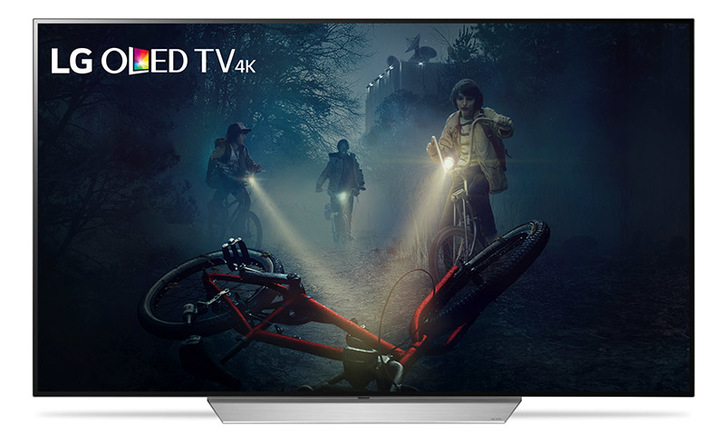
The LG C7 OLED TV uses Organic Light Emitting Diodes (OLEDs) to create the picture. This differs from LCD/LCD TVs in that each individual pixel - each dot on the OLED screen - can be individually, and instantly turned on or off. This allows OLED TVs to reproduce black levels extremely well, and makes the set particularly good at reproducing images like a sky full of stars, a streetlamp in a dark alley, or white credits scrolling on a pitch black background.
Outside the Box
One of the things that struck me as I removed the TV from its box was just how light it was. The 65-inch C7 provides a fairly massive viewing screen, but it weighs in at just 54.5 pounds. Although it was slightly awkward due to its sheer size, I was able to single-handledly lift it onto our TV stand and slide it into position. I recalled a previous TV I reviewed just a few short years ago (OK, eleven): VIZIO's 60-inch MAXIMUS plasma TV. That monster tipped the scales at 179 pounds and took two grown men to lift into position. It also had about about one eighth the resolution, a smaller screen, reduced color fidelity and actually cost slightly more than this shiny new LG OLED. What a difference a decade makes.
The Set Up
I was eager to get started with the LG OLED as I'd spent some quality time with the W7 OLED Wallpaper TV about a year ago and was impressed with what I saw. Setting up the C7 was fairly straightforward: I added my WiFi password, tapped in all the account details for Netflix, Amazon and VUDU and waited for all three apps to update. This update process was something that happened a few times over the course of our review, but it was usually a quick affair.
I then set up the built-in ATSC tuner to receive my local HD stations. Those local channels were added in a flash, and I got my first look at locally broadcast HDTV programs, which looked stunning on the set: the soccer pitch was just the right shade of green and network prime time dramas and comedies looked crisp and detailed. But forget about boring old "High Definition" - that's so 2003! I really wanted to check out 4K Ultra HD content with Dolby Vision, so I loaded up "Marvel's Daredevil" on Netflix... and was immediately disappointed.
We're Gonna Need A Bigger Pipe
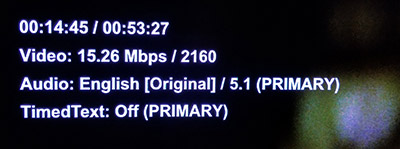
It was worth the effort. Once the hard line was set up, things got a lot clearer - literally. 4K Dolby Vision content like "Daredevil" appeared almost hyper-realistic, or as one friend said, "it's better than my vision." I clicked the "info" button in Netflix and confirmed that I was getting an Ultra HD stream (2160p) in Dolby Vision. Netflix bandwidth topped out at about 15.26 Mbps, and that was plenty to get the full 4K Dolby Vision stream. I tuned into several other Dolby Vision UHD titles on Netflix, like "Jessica Jones," "Stranger Things" and "Okja" with results similar to "Daredevil." Shadow details were nicely rendered, colors were rich and saturated, and black levels... well let's just say I did not miss my old plasma reference set. OLED is definitely the current king when it comes to black level reproduction.
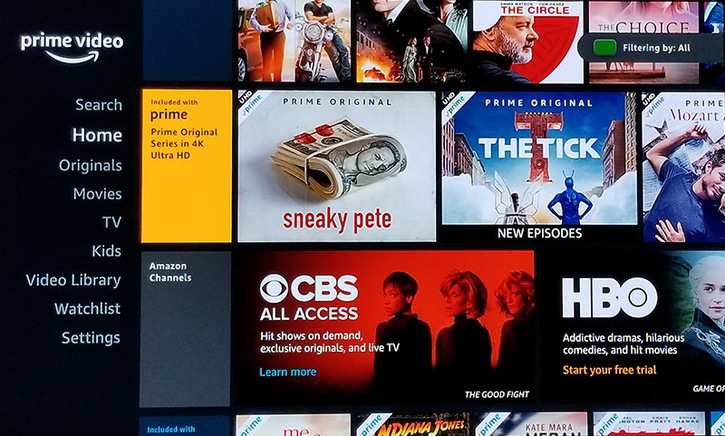
Switching over to the Amazon Prime Video app, I found a decent selection of Ultra HD content - mostly Amazon original series and movies, with a few additional titles. But Amazon doesn't seem to be expanding its catalog of Dolby Vision titles, opting instead for standard "static" HDR 10 High Dynamic Range. Even so, titles like "Man in the High Castle" looked clean and nicely detailed: dystopia has never looked so good.
I've never considered streaming to be the best way to watch high quality content, but I must say that these shows and movies on Netflix and Amazon were quite enjoyable to watch on the LG OLED. And the quality only got better when I switched over to VUDU. I had only a few Ultra HD movies on VUDU including "Blade Runner," "Despicable Me 2" and "Fate of the Furious" but each of these titles virtually popped off the screen. "Fate of the Furious" was particularly impressive. In the films's opening we are treated to a gorgeous montage of colors and textures, from the cerulean blues of the Caribbean Sea to the multi-colored buildings of Havana, to gleaming classic cars to lovely ladies in bikinis and short-shorts ("Hey, honey, check out these skin tones!").
Getting Physical
Moving on to physical media, things only got better. While streaming, I did see the odd digital artifact, and bandwith fluctuations did occasionally cause the quality to go downhill temporarily. But playing Ultra HD Blu-ray Discs on our OPPO UDP-203 universal disc player offered a noticeable bump in quality. "Blade Runner" is over 35 years old now, and it does show its age at times in some of the effects shots. But those opening credits: crisp white letters with red highlights overlaying a pure black background: this is what OLED was made for. And that opening montage from "Fate of the Furious" looked even more impressive when played from the disc. As a side note, the OPPO UDP-203 player is the best disc player we've seen so far. Discs load quickly, video and audio performance is exceptionally clean, and it just feels solid and tank-like. The player does not include any streaming apps, but with the selection of 4K/UHD-capable apps on the LG TV, you really don't need them on the player.
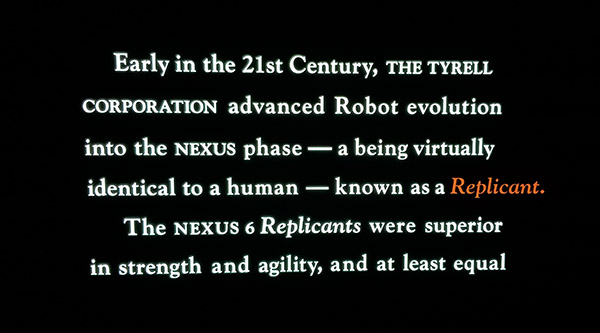
Trouble in Paradise?
In our viewing tests, not everything was goodness and light. For the most part, everything from SD games on the WII, to HD broadcasts, 4K satellite programs, streaming content and Blu-ray Discs looked exceptionally crisp and detailed, with everything presented in UHD or upscaled to the panel's native UHD resolution. But there were some exceptions. The LG set includes processing on board that is meant to enhance the dynamic range of content that is *NOT* encoded in Dolby Vision. It's called "Active HDR" and it's goal is to analyze HDR 10 UHD content (with its static HDR meta data) and expand the range to look more like dynamic HDR. In most cases, this processing did appear to enhance the image quality, but not always.
We noticed a couple of cases where the image of a UHD HDR10 source was actually blown out, with noticeable loss of detail, and no easy way to fix that. Again, this didn't happen often, but when it did, the effect was not pleasant. One example is the Ultra HD Blu-ray Disc of "Harry Potter and the Goblet of Fire." In the scene where the Minister of Magic officially opens the Quidditch World Cup (Chapter 3 at 9:28), Cornelius Fudge's facial features are virtually impossible to discern, replaced by a glowing blur. Later in the film, in the cemetery where Harry's parents and other dearly departed spirits come to lend a hand (Chapter 26 at 2:09:28), we get the same effect: it's only possible to tell who is speaking by their voice, as the ghostly faces are not identifiable.
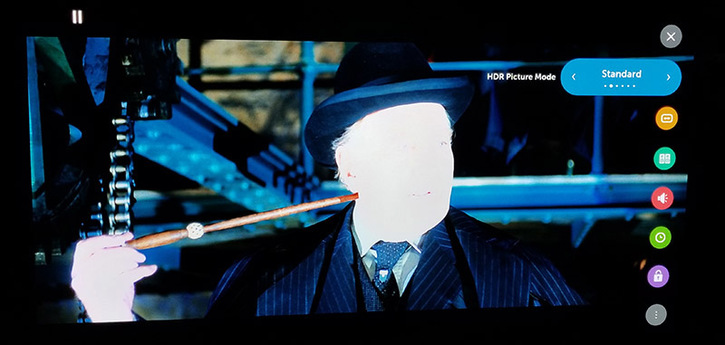
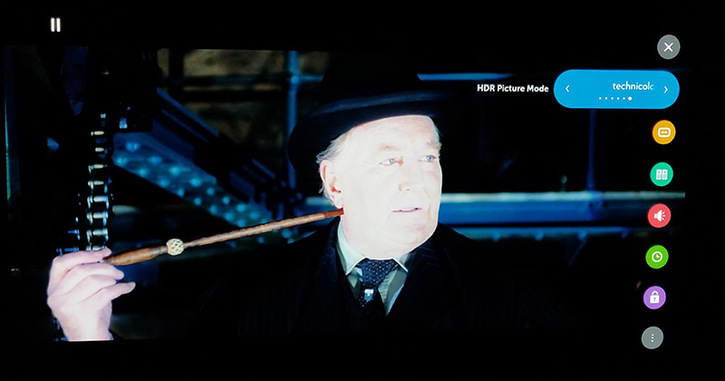
I tried adjusting picture controls to address the problem. And the image clearly improved if I took the set out of its default "Standard" HDR mode and switched it over to "Cinema" or "Technicolor Expert" HDR modes, but picture detail was still reduced. I even got into the "Expert Settings" controls and tried adjusting the "Dynamic Contrast," (setting it to "Off") but this setting had no visible effect on this specific issue. I've reported the issue to LG and they are investigating. Their initial response was that this is probably the "artistic intent" of the film-makers, but having seen this film on a variety of screens and in theaters, I have to disagree - no one would intentionally make these scenes look this this. Hopefully it's something that they can address in a future firmware update. It's also something I'll be exploring on the 2018 models as soon as I get the chance.
It's Just Too Easy
One thing I had few complaints about was the simplicity of the TV's user interface. The "Magic Wand" remote rests comfortably in the hand and tracks your motion with an on-screen cursor similar to a Wii game controller. And the latest version of LG's WebOS "launcher" makes apps, inputs, and favorite content easy to find. A click on the home button on the LG remote overlays the WebOS launcher on top of whatever app or channel is currently playing. Scroll left or right to select your desired app or input. And if you want to rearrange or even delete one of the app stripes, just hold in the scroll wheel and drag the app stripe where you want it. As you scroll through content choices, you can also click a favorite button and this will add it to your "My Content" area on the left of the screen. This makes it even easier to find your favorite shows later for a binge-watching session.
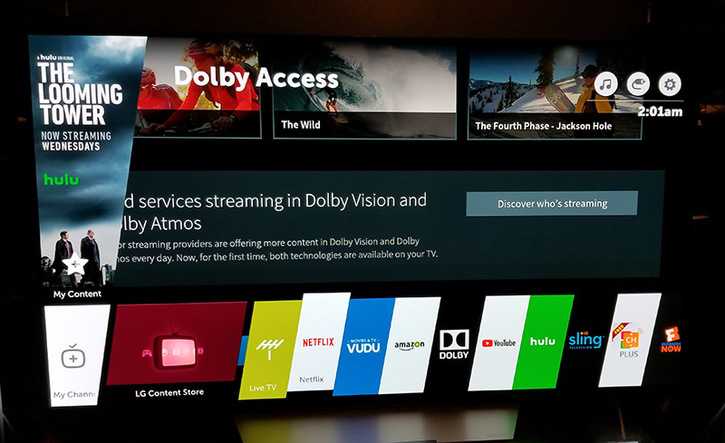
I did run into some odd behaviour when using our Harmony Elite remote to control the TV. Hitting the "Exit" button on the Harmony remote is the usual way of exiting out one level from an app. For example, if you decide you want to back out from a particular episode of a show in Netflix back to the main menu of that show, "Exit" takes you there. But the "Exit" command on LG actually takes you out of the app entirely and back to whatever the previously selected input was (with the WebOS Home screen no longer visible). This was confusing as it was not immediately obvious that we had to hit the "Home" or "Netflix" button again in order to get back into Netflix.
On the LG remote, the "Back" button takes the expected action, but holding in the Back button for a couple of seconds on the LG remote also performs the "Exit" command - leaving you with the exact same problem: stuck in a generic screen with no context or app stripes visible at the bottom. You have to hit the "Home" button to see your WebOS choices appear on screen. Once we got used to using the back button on our Harmony instead of "Exit," all was well; it just took some retraining. If you do use a Harmony remote with your system - or if you hold the LG remote button a little too long, keep this in mind.
Big Sound!
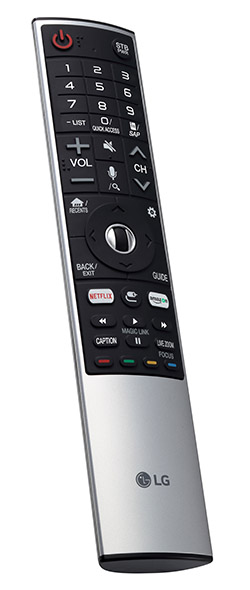
I did test the C7's Dolby Digital Passthrough feature and found that the set was able to properly pass through a Dolby Digital 5.1 channel audio signal out via its fiberoptic digital output. This works for the on-board streaming apps, but also with a Blu-ray Player and DISH receiver that were hooked up to the TV via HDMI jacks. So if you're just looking to add standard 5.1-channel surround sound (like with a Sonos PlayBar or PlayBase system), the LG set makes an excellent choice.
The Burning Question
Burn in - the condition where certain parts of the screen become temporarily or permanently discolored - is a bit of a controverial topic. LG says burn in doesn't happen on their TVs during "normal use." Current OLED TVs like the C7 series include counter-measures in the TV itself to prevent burn-in from occuring. And so the company doesn't cover it under their warranty. However, there are some folks posting online who say that their model year 2016 (and earlier) OLED sets have developed burn-in from normal use.
Burn-in can occur on plasma, OLED and CRT displays when a fixed image - such as a network logo or a videogame health bar - is displayed on the screen in the same place for extended periods of time. Even when a TV has mild burn-in, it may not be noticeable on standard content. But there are test patterns you can use to identify burn in or image retention.
Simple videos that display a single, solid color uniformly on the screen can help you to visually identify any panel uniformity problems, temporary image retention or burn in. I ran the C7 through a gauntlet of single color video loops, including red, yellow, orange, green, magenta, white and blue screens. And I'm pleased to report that after about six months of constant use, there is no visible evidence of screen burn-in or image retention: just the crisp colors and deep gorgeous blacks I've come to take for granted over the past few months.
Turn-Ons
Turn-Offs
Final Thoughts
Having this set in as our regular day to day TV for the past six months has been a real treat. I have found myself watching more TV - even bad TV - just because it looks so good. The set's UHD resolution and Dolby Vision HDR support creates the best looking moving images we've yet seen on a consumer display. It was a rare occasion when the set's picture performance was anything less than stellar. The C7 also offers a simple, intuitive Smart TV streaming interface and a nice selection of UHD-capable streaming apps. Add in the fact that it supports Dolby Atmos and Dolby Digital passthrough for use with an external sound system, and you'll be hard-pressed to find anything to complain about. In short, the LG C7 OLED TV does what TVs are supposed to do... and does it really well.
| Overall | |
|---|---|
| Value | |
| Performance | |
| Features/Ergonomics |